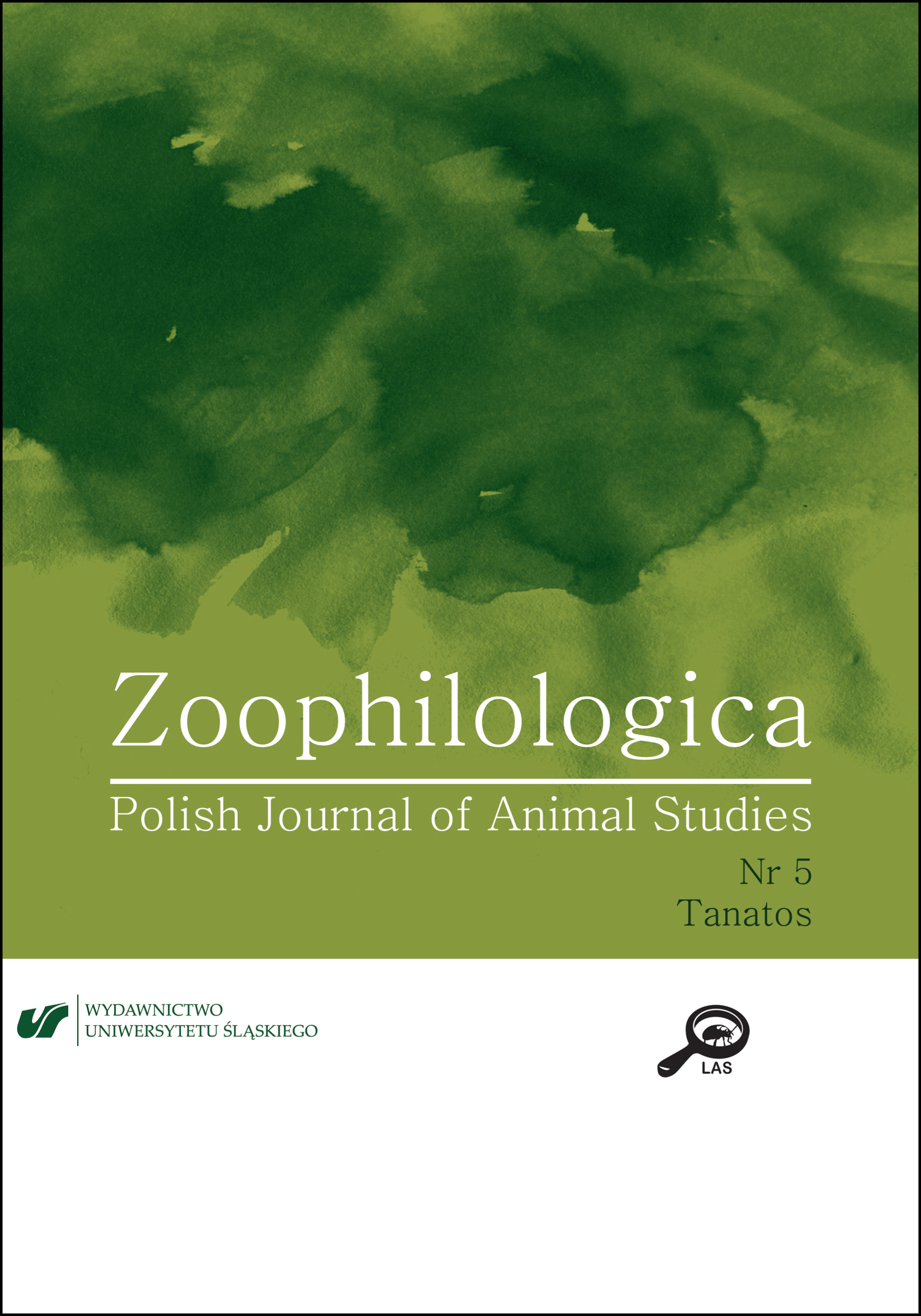

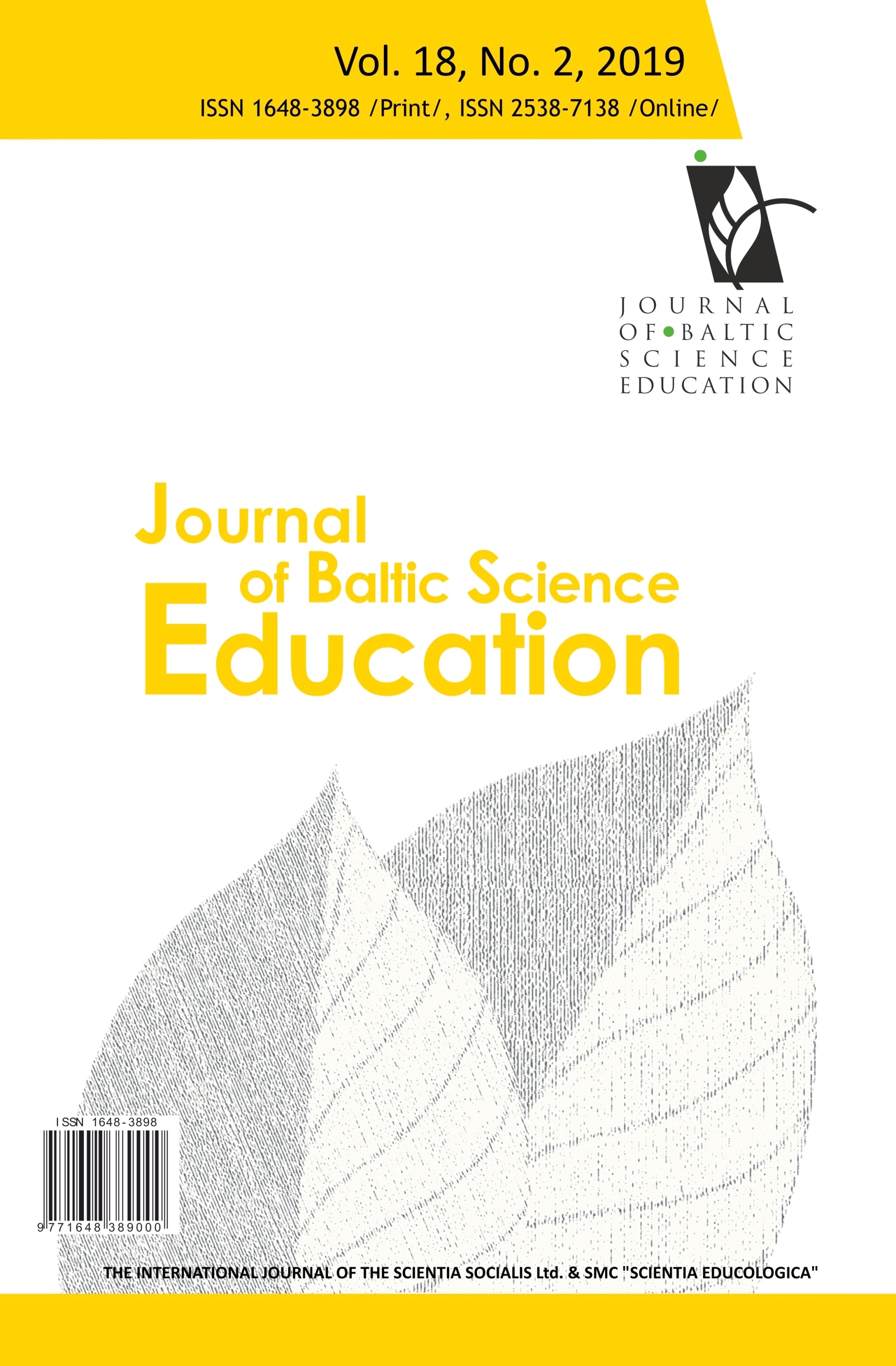
Keywords: classification algorithms; educational data mining; eighth grade; science success; TIMSS 2015;
Educational Data Mining (EDM) is an important tool in the field of classification of educational data that helps researchers and education planners analyse and model available educational data for specific needs such as developing educational strategies. Trends International Mathematics and Science Study (TIMSS) which is a notable study in educational area was used in this research. EDM methodology was applied to the results of TIMSS 2015 that presents data culled from eighth grade students from Turkey. The main purposes are to find the algorithms that are most appropriate for classifying the successes of students, especially in science subjects, and ascertaining the factors that lead to this success. It was found that logistic regression and support vector machines – poly kernel are the most suitable algorithms. A diverse set of features obtained by feature selection methods are “Computer Tablet Shared”, “Extra Lessons Last 12 Month”, “Extra Lessons How Many Month”, “How Far in Education Do You Expect to Go”, “Home Educational Resources”, and “Student Confident in Science” and these features are the most effective features in science success.
More...
Keywords: chemistry education; education effectiveness; interest in science; students’ attitudes;
This research follows the previous study examining the effect of chemistry education on students’ perception and understanding to the nature of chemistry (NoC) as well as their attitudes towards it as a school subject. Grade 9 students (N = 282) at the end of their compulsory schooling were given a set of open-ended questions focused on their understanding to NoC, perception of chemistry topics’ importance, topics the students found interesting and their evaluation of chemistry as a school subject. The answers were analysed using the open coding approach. It is possible to conclude most of the students do not have a clear idea about the nature of chemistry. Students assess chemistry as a school subject in the middle of the 5 point Likert scale. The results of this research offer the background for a more complex analysis of effects influencing students’s conception of chemistry and its subject matter.
More...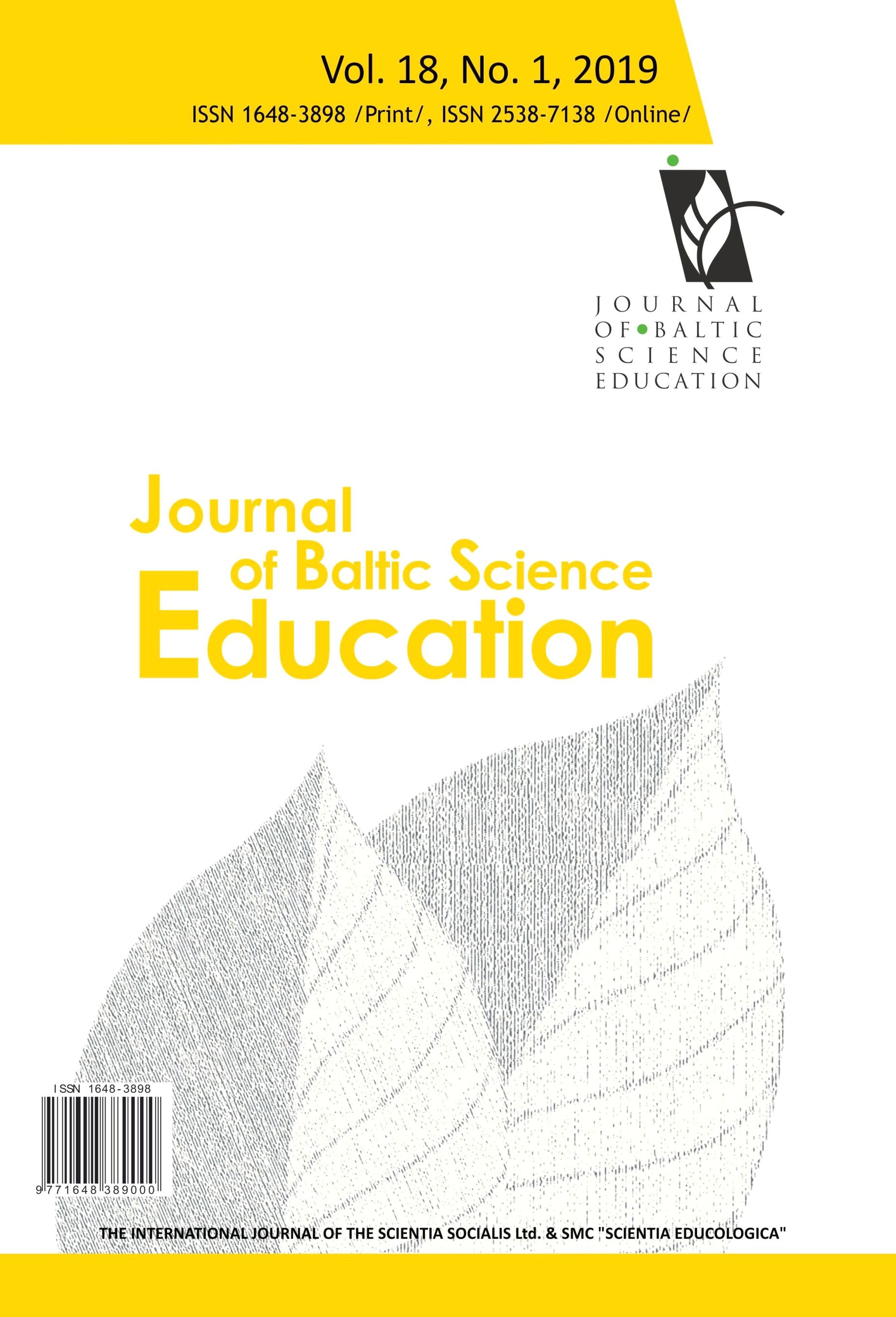
Keywords: agricultural education; biology education; contextual factors in education; knowledge of photosynthesis;
This research aimed to assess the knowledge of photosynthesis among students in agricultural education and understand the influence of the contextual factors on it. In photosynthesis, biomass is produced, so understanding these processes is essential for successful agriculture. The research sample consisted of 330 students in agricultural education in Slovenia. Data were collected with a knowledge test and a contextual questionnaire. Better knowledge of photosynthesis was positively related with higher awareness of the importance of biology as a science and of photosynthesis. There was no significant relation between the knowledge of photosynthesis and positive attitudes toward biology lessons. The average achievement on the knowledge test of photosynthesis was 56%: the highest on the item about energy and the lowest on the item about the primary purpose of photosynthesis. Between these two achievements was the knowledge of reactants and products in photosynthesis, and the knowledge concerning chlorophyll. Considering these results, improvements should be made in teaching. For this population, more experimental and less theory-based lessons were suggested. The findings could benefit biology and science teachers in agricultural education and help improve national curriculum for biology in agricultural programmes.
More...
Keywords: decision making trial and evaluation laboratory; science achievement; structural equation modelling; TIMSS;
This research was the first research integrating decision making trial and evaluation laboratory (DEMATEL) and structural equation modeling (SEM) to analysis factors, including interest in science, value in science and confidence in science, affecting female students’ science achievements from the Trends in International Mathematics and Science Study (TIMSS) 2011. The research constructed two causal models base on mutual effect of value in science and confidence in science by DEMATEL analysis. The causality of two factors in model 1 was value in science affected confidence in science and model 2 vice versa. According to the results of SEM analysis, fit indices of CFI, GFI and AGFI in model 1 were 0.851, 0.796 and 0.745; in model 2 were 0.818, 0.772, and 0.873. And results showed that female students had better fitness in model 1; in other words, the causality of value in science to confidence in science might have an important effect on the science achievement of female students. Lastly, these findings could provide not only a different perspective for future researches but also a useful insight as a reference for policy making and improvement by relevant decision makers.
More...
Keywords: engineering functional literacy; functional literacy; key competence; problem solving; science functional literacy;
Literacy, in particular functional literacy in various fields and especially in the field of STEM, is becoming an increasing problem in modern-day society. The question arises, can the school system develop the kind of functional literacy in students, which allows them to fulfil, in real life, their personal and professional needs related to the competence of reading and creating written texts from the field of science, technology and engineering? The present research aimed to explore how students in today's schools are trained in functional literacy, especially in the fields of technology and engineering, and what kind of literacies in the field of STEM they are able to (or should be able to) master competently. The present research showed that students achieve relatively poor results in the area of functional literacy, both regarding their science literacy, and especially their technology and engineering literacy, which is a result of a lack of competence on behalf of mother-tongue teachers to develop this kind of functional literacy. Functional literacy should be developed by teachers of individual areas of STEM subjects.
More...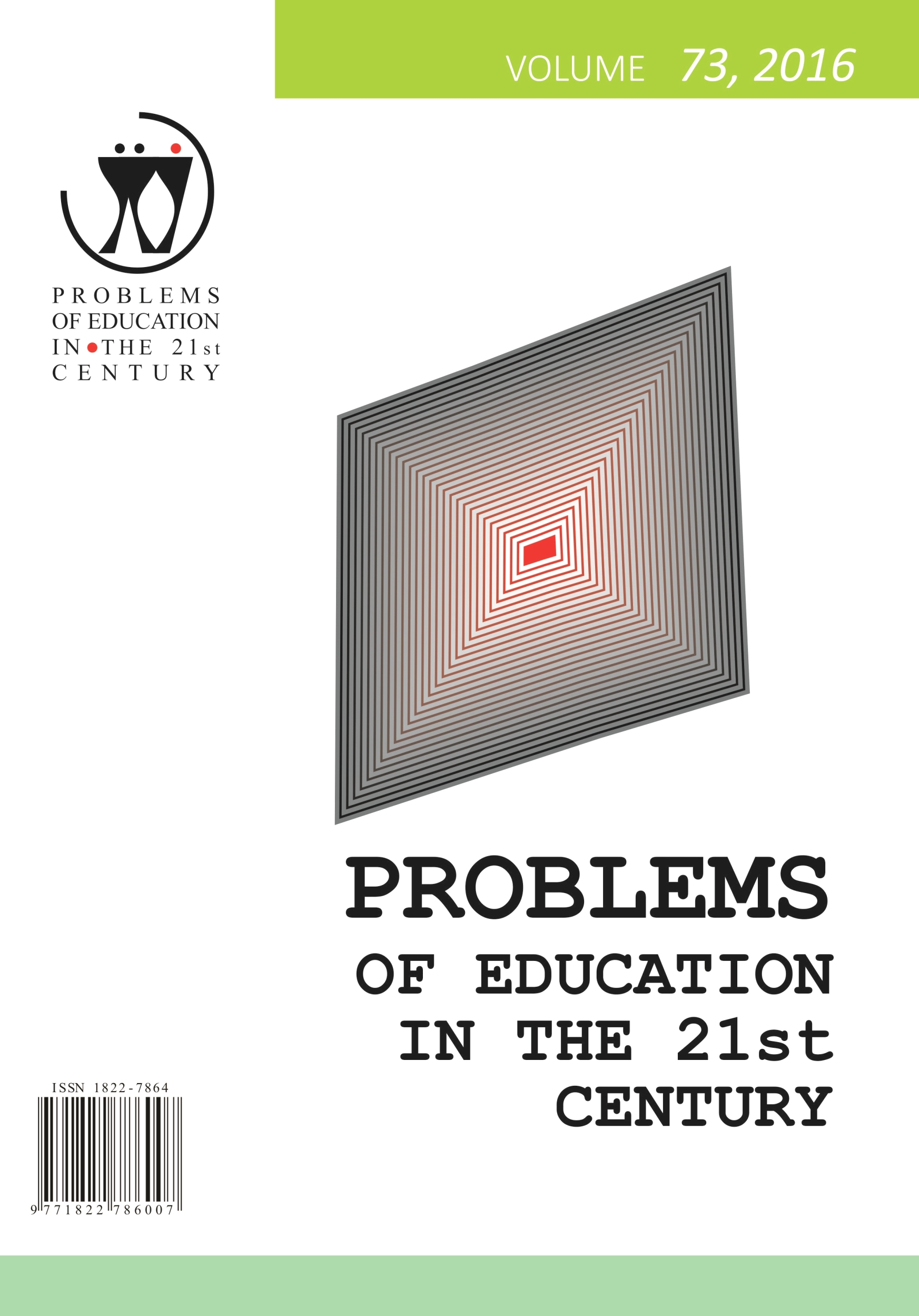
Keywords: entrepreneurial education; lower secondary school; teachers’ and learners’ experiences; parental background; visible and invisible pedagogy;
Entrepreneurial education is described as gaining abilities that enable the future workforce to develop, be part of and adapt to the changing society. International policy texts, from for instance the Organisation for Economic Co-operation and Development (OECD) and the European Commission, agree that entrepreneurial abilities are to be taught and learned in school. Even if this has been on the agenda for decades, it wasn’t inscribed in the Swedish curricula until 2011. This research focuses on lower secondary schools and what is called the broad approach or entrepreneurial education. To foster entrepreneurially, different progressive theories of instruction are often suggested. Basil Bernstein has outlined two generic forms of instructional theories: visible and invisible pedagogy; visible pedagogy can be described as “traditional”, while invisible pedagogy requires progressive teaching and learning. Based on classroom observations, interviews with teachers and learners, this study elaborates on these concepts in relation to experiences of entrepreneurial education. Different challenges, due to contradictory messages in curricula, learners’ backgrounds and experiences, as well as teachers’ approaches, are revealed. The study suggests that, even though more or less ambitious attempts are being made, “pure” entrepreneurial education is difficult to enable in a practice where visible pedagogy is the standard educational practice.
More...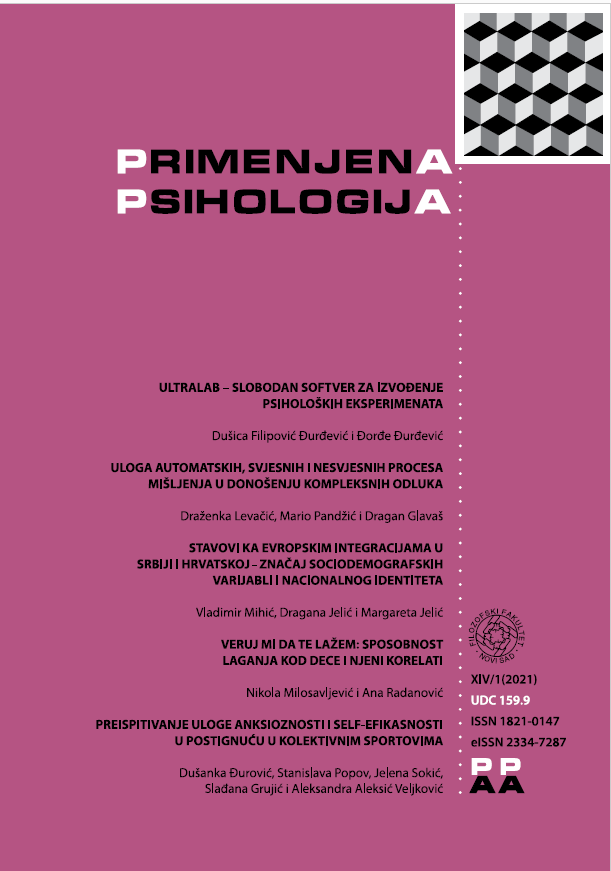
Keywords: Pro-European orientation; European integrations; EU as threat; national identity; attitudes toward Europe
For the past few decades, European integration has been one of the primary issues not just in politics, but also in the social sciences. This issue becomes even more important when research takes place in countries where the population is ambivalent in their support for the EU and European integration. The main aims of the study presented in this paper are to investigate differences in Serbia and Croatia in proEuropean orientation and the perception of European integration (EI) as a threat, and to determine the factors underlying both constructs by focusing on sociodemographic variables, the importance of religion, and different forms of national attachment. The results show that citizens of Croatia have a stronger pro-European orientation, while there is no difference in the perception of EI as a threat. Pro-European orientation is determined by the respondents' national identity (in both countries) and gender, the importance of religion, and national pride in the state (only in Serbia). The significant predictors for the perception of EI as a threat were constructive patriotism and national pride in successful individuals (in Serbia), blind patriotism (in Croatia) and the importance of religion (in both countries). The practical importance of the results could be in understanding the obstacles and reservations different people have regarding European integrations.
More...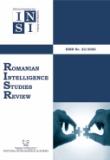
Keywords: risk; terrorism; intelligence; antiterrorism; institutions;
The paper starts from a definition of terrorism which is widely accepted and frequently used in scientific publications in Serbia, due to its compatibility and accuracy. The paper also explores the reasons for adopting such a definition of counterterrorism (CT), which encompasses a wide spectrum of countermeasures, normative frameworks and institutional architectures. In order to fundament the scientific discourse, the concept of risk was examined, as well as indications about an essential element of risk, i.e. the negative consequences for the entity. In the definition of risk, as one of its key elements, the vulnerability of entities is emphasized, which includes their resistance or, to put it differently, their ability to carry out adequate responses. This aspect is highlighted as it confirms the goal of the model of analysing the concept of counterterrorism, but also the deepest basis for the construction of the CT concept. Additionally, some components of the new intelligence paradigms are also highlighted, which may be of relevance for the research of the CT concepts. The paper concludes that the adaptability of the normative and institutional framework is the main objectives of the CT constructions. Adaptability also pertains to action plans and measures to the current threats and must include timely determination of the directions and instruments for action, as well as the establishment of solutions that involve the anticipation of future risks. It has been previously highlighted that the goal of CT is to achieve the coordination of the strategic, tactical, and operational level of activity and provide an innovative, creative and proactive perspective. The key direction in the field of CT is not only to achieve efficiency, but to be effective as well.
More...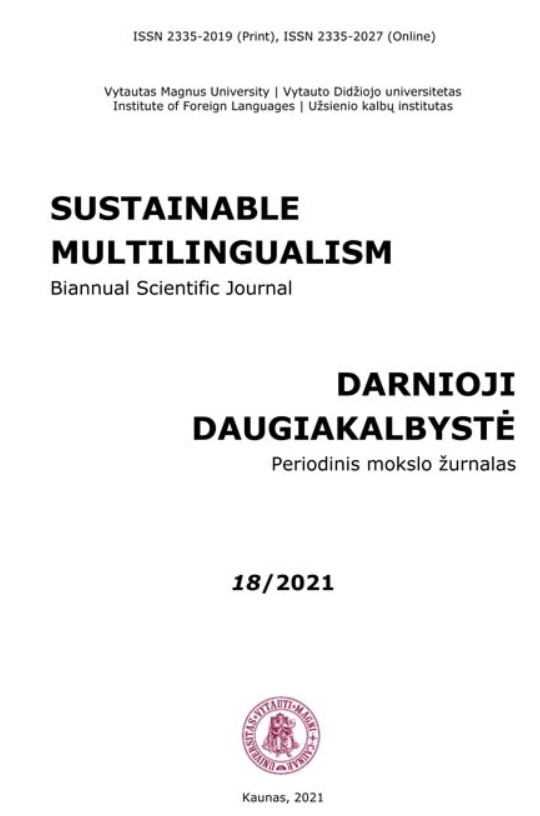
Keywords: Linguistically Sensitive Teaching; Minority languages; Migrant languages; Multilingual education; Primary education; Teacher training;
Multilingual environments and migration have led to an increasing number of multilingual students, and consequently, to a need to take the varying linguistic repertoire of students into account in education. The aim of the present study is to explore Linguistically Sensitive Teaching (LST) as a possible linguistically inclusive approach and to examine how LST is perceived by pre-service primary teachers in the multilingual context of the Basque Autonomous Community (BAC), where the majority language, Spanish; the minority language, Basque; and the foreign language, English are included in the curriculum, all while some students might have other additional home languages that are not part of the curriculum. The methodological approach is a qualitative research study, in which data have been collected among a group of pre-service primary teachers from the BAC through written reflections, focus groups and observations. The results show the perceptions of the pre-service teachers on education policies in relation to linguistically sensitive teaching practices, good practices identified during their school placements, possibilities to promote Linguistically Sensitive Teaching in the classroom, the role of the minority language Basque in LST, and the threats, challenges and opportunities perceived in LST. It is concluded that despite some basic notions of LST, the lack of in-depth knowledge of pre-service teachers is visible, advocating for the need to include formation on LST in Initial Teacher Training.
More...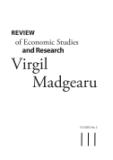
Keywords: mandate; representation; agent; principal; prête-nom; power of attorney;
The mandate contract, although it bears similarities to other types of conventions and legal institutions, is unequivocally different in its specific features. In our article, we shall try to distinguish the mandate from representation, a legal institution with which it shares similarities that have generated doctrinal discussions. We believe that the usefulness of this approach is justified all the more since representation has received its own legal regulation under the new Romanian Civil Code, for the first time in our civil law. The conclusion of our study is that representation is not the essence of the mandate, but only characterizes its nature, since there is mandate without representation, as well as representation without mandate.
More...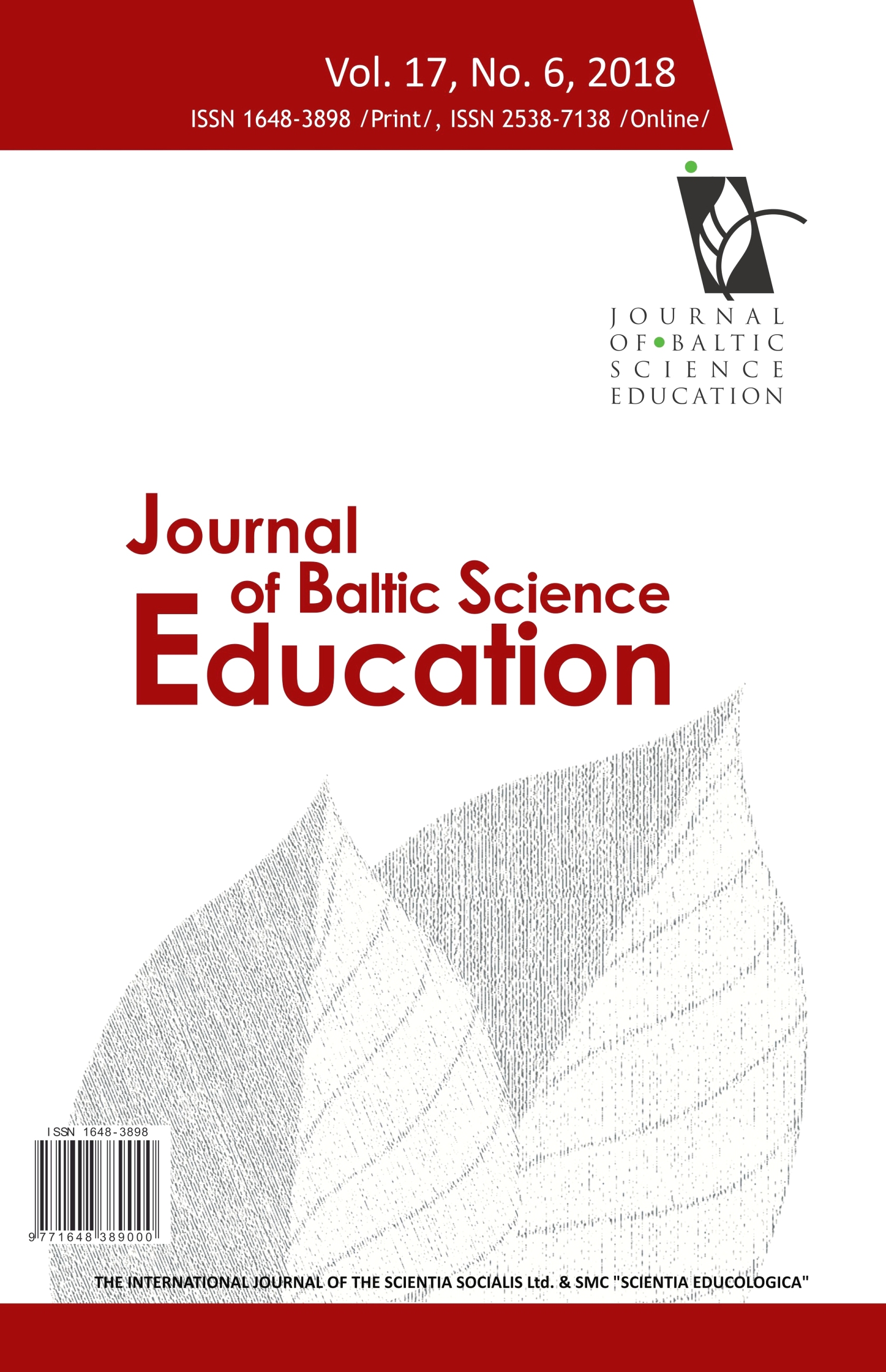
Keywords: attitudes toward wolves; knowledge about wolves; vocational upper secondary school students;
Wolf (Canis lupus) conservation is multidimensional. Its aspects include the consensus between different interest groups. The present research aimed to assess the attitude and knowledge of the students (N = 483 students from three schools age 14-19) enrolled in the environmentalist, veterinary and agricultural technician study programmes through a questionnaire, as their profession represents a part of this multidimensional consensus. The research results indicate that students have neutral to positive attitudes toward wolves, generally. Their knowledge of wolves, however, is limited. Agricultural technicians showed the most negative attitudes toward wolves and the lowest knowledge. Overall, correlations between all attitudinal dimensions and correlations between attitudinal dimensions and knowledge were found, with the highest correlations between conservation dimension and all other dimensions including knowledge. The research findings support the widespread assumption that education within the above-mentioned study programmes should focus also on the current socio-scientific issues of animal conservation. Special attention should be given to the education of agricultural technicians as their utilitarian view could interfere with the effective conservation of large carnivores.
More...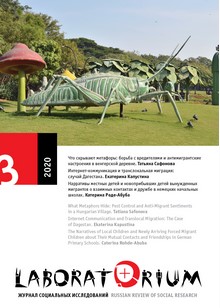
Keywords: Childhood; Forced Migration; Social Integration; Friendship Making; Children’s Agency;
Even though almost half of the forced migrant population that entered Germany during the last several years are minors, research about the perspective of children on forced migration is very scarce. Drawing on childhood studies, which regard children as being capable of social thinking and acting, and generational theories, which scrutinize how childhood constitutes a common “social space,” this article aims to analyze narratives of local and forced migrant primary school children on flight and integration. Current regulations of the German educational system insert forced migrant children into the regular school system. Within the restrictive framework of schools, which disadvantage newly arriving migrant children by focusing on their German language skills as the primary marker of their educational potential and success, friendship-making is the sphere where children can have agency. Children construct the school as their common generational space and discuss flight as the experience of “being new in school.” This allows children to acknowledge their different biographical backgrounds but empathize with each other and identify as generational members through their subjection to the educational system. Local and forced migrant children bridge language differences by performing their friendships through language-learning rituals. Hence, the public primary school system sets preconditions for the structural integration of local and migrant children, but the most important actors who “do integration” as a social process are children themselves.
More...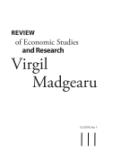
Keywords: brain drain; non-economic factors; highly-skilled migration; push factors; pull factors;
Though political instability and economic factors are traditionally considered main migration determinants, this review is an analysis of the relationship between non-economic factors and highly skilled migration (or brain drain phenomenon). Based on a detailed literature review, we discover that brain drain can be caused by numerous non-economic “push factors”, as the perception of persisting corruption, the existence of a democracy deficit, and the perception of organizational misconduct in public or private sectors. “Pull factors” were also identified, as quality of life, job opportunities, and generally speaking a better quality of life. In the context that highly skilled migrants’ decision to migrate is not totally influenced by economic aspects since they can obtain an acceptable income in their home countries, the identified non-economic factors could be considered and further researched as major determinants of the brain drain phenomenon.
More...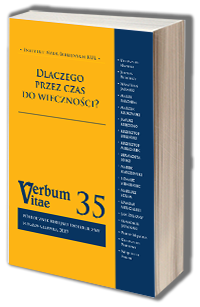
Keywords: Book of Revelation; Apocalypse of John; time; hour; half-hour; second coming of Christ; God and history; judgment
Correct understanding of the term ὥρα in Rev depends on the literary and theological context. In the first section of the article the texts of the Letters to the Churches are discussed. There, in the context of the message of Christ, the “hour” is related to the situation of each Christian community. In the Letter to the Church in Sardis (3:3), a lack of vigilance can cause her not to recognize the time of the Lord’s coming. In the Letter to the Church in Philadelphia (3:10), the community receives a promise to be preserved in the hour of trial. In the second section of the article, the texts of the main part of Rev are discussed. In Rev 17–18 the “hour” has two different meanings. In the context of Rev 17:12 the “one hour” symbolizes the limited period of government directed against God, Christ and the Church. In a funeral song in Rev 18 the “one hour” is a recurring element of laments over the kings, the merchants, and of the owners of seagoing ships (18:10.17.19). The expression “one hour” indicates an impending and sudden fall of Babylon. In other texts the “hour” is a moment of fulfilling God’s intentions (11:13) and a precise, planned moment of judgment (9:15; 14:7.15). In the third section the expression “half-hour” (8:1) is discussed, which probably means a very short period of time. Thus, in the context of Rev the term “hour” may mean either a specific historical moment or a very limited period of time, but always an element of time planned, implemented or permitted by God.
More...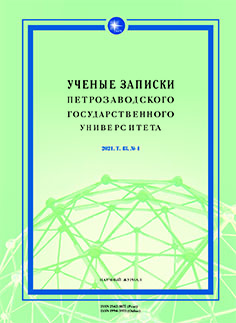
Keywords: Sudan; Graduates’ General Congress; press; debating societies; political partiesM
The article deals with the activities of the youth public organization known as the Graduates’ General Congress, whose members were the graduates of different educational institutions in Sudan. With the growth of its authority among the young generation and the most active society strata, thanks to its humanitarian and social initiatives, this organization entered politics and was able to form and defend its benchmark ideas in front of the Anglo-Egyptian colonial administration. Members of the Organizing Committee of the Congress also were political writers and took part in the activities of the press, which got a serious impetus to development in the 1940s. Gradually, on the basis of various ideological and political trends within the Congress, the first political parties that had their own press were formed. The article presents newspapers and magazines of those years and indicates the personal participation of the members of the Organizing Committee of the Congress in their publication activities. It gives a much deeper understanding of the political preferences and aims of young politicians who formed the political elite of the country and the Sudanese national journalistic school after Sudan declared its independence in 1956. The authors used research papers and memoirs written mainly by the Arabic-language Sudanese authors as their study materials. Most of the sources are mentioned in the historiography of oriental studies for the first time.
More...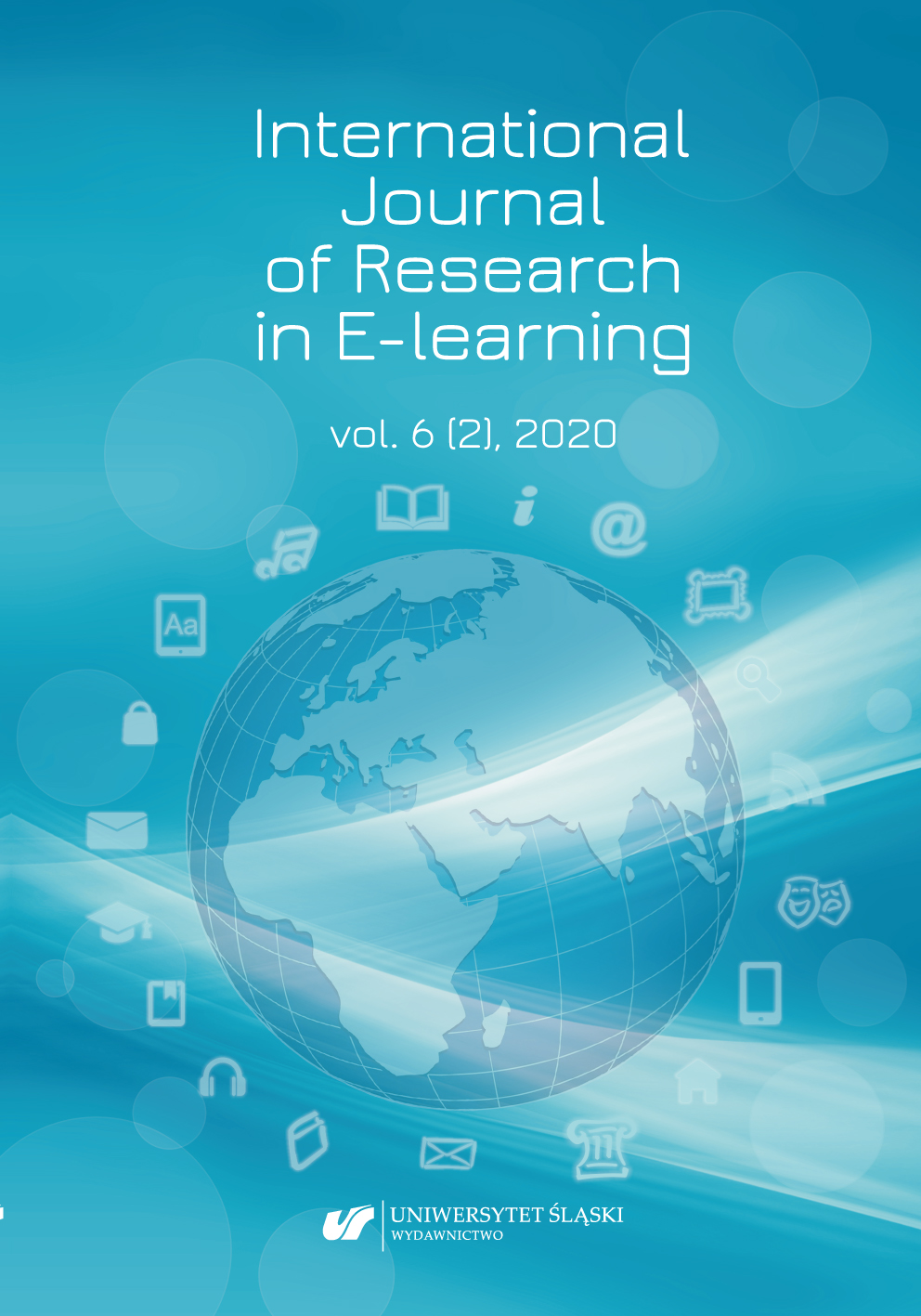
Keywords: computer mathematical tools; dynamic geometry software; computer algebra system; pre-service teacher of mathematics; pre-service teacher of computer science;university education;
The requirements for the training of mathematics and computer science teachers to use specialized mathematical software in professional activities are substantiated in the article. Among them: the ability to creatively choose the forms and methods of teaching for the use of specialized software; ability to find non-standard or creative mathematical problems; ability to make an informed choice of specialized software; ability to see possible ways to check the result obtained by the pupil; the ability to eliminate common mistakes when pupils use computer tools, etc. The specialized mathematical software, which is used today in mathematical training of mathematics and computer science teachers in Ukraine, has been specified. The specialized mathematical software which is used today for teaching mathematics in schools of Ukraine is given. The analysis of computer tools used by the teacher in the most common mathematical software is carried out. The most urgent problems faced by mathematics teachers in their professional activities are of using dynamic geometry software and appropriate mathematical tools on the level of pupils’ mathematical training, which is reason to talk about the importance of computer science and mathematics pre-service teacher training to involve such tools in professional activities. Prospects for further research in the direction of developing methods for using computer mathematical tools in a research-based learning environment are presented.
More...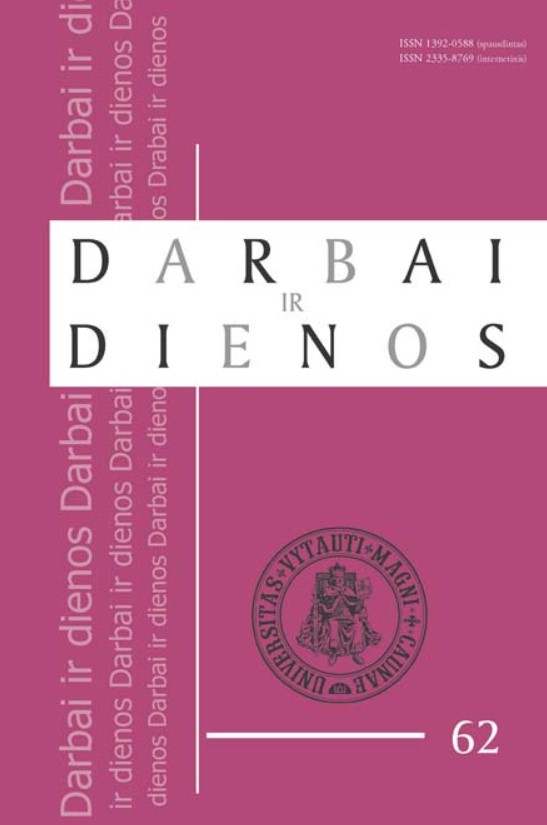
Keywords: standardization ideology; standard language; codified pronunciation; news broadcasts; long tense vowel;
The paper raises the issues of how the long tense vowel o, which is considered as one of the markers of standard language, has been realized in TV and radio news broadcasts over the last five decades and what linguistic and non-linguistic factors affect changes in its usage. The empirical data of this study consist of TV and radio news broadcasts since 1960. All the news broadcasts come from a representative, retrospective corpus of more than 60 hours of Lithuanian broadcast media divided into three periods of broadcast media development: the Soviet period (from 1960 to 1987), a transitional one (from 1988 to 1992), and the contemporary period (from 1993 to 2011). The pronunciation of a total of 39 news broadcasts and their fragments and of a total of 134 anchors, announcers, news readers, and reporters was analyzed. The study revealed that although our language standardization ideology has not changed since the seventh decade of the last century, even in the “ideal” conditions of the Soviet era, i.e., when the content and the speech of news broadcasts were strictly supervised and controlled and all the texts were rehearsed and read, the usage of the long tense vowel o had never met the ideal of the standard language pronunciation.
More...Keywords: English as a Second Language (ESL); Best Plus; language intervention; English Language Learner (ELL); refugee
Learning a second language at any age is a difficult feat; however, entering the United States as an adult refugee includes a host of affective factors that can impact second language acquisition from the onset. Such factors include time, opportunity, and motivation to learn English. Many adult learners fear ridicule or offending native speakers as they are learning a second language, so they may be more inhibited in their practice of it. To combat these fears an Mp3 intervention was initiated to allow a group of Karen speakers the opportunity to practice English in the safe environment of their homes on a daily basis. English lessons and their Karen translations were recorded onto Mp3 players that allowed the participants to hear correct pronunciations, vocabulary, and English syntax on a daily basis. This mixed methods case study considered data from a previous pilot study and its limitations, and then replicated the study attempting to resolve any issues found in the previous study. A certified administrator assessed each participant using the Best Plus Test to achieve an English proficiency baseline, a secondary test after ten weeks of no intervention, and then a final evaluation was assessed after a ten-week intervention using the Mp3strategy. Researchers found that the Mp3 intervention had a significant impact on the number of Student Performance Levels (SPL) that a participant increased within the ten-week intervention. However, the most effective methodology was to couple this intervention with weekly ESL classes to reach the maximum number of participants.
More...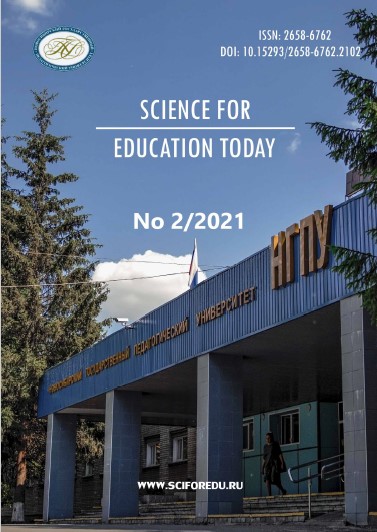
Keywords: Children with severe and multiple developmental disabilities; Disability; Integration; Inclusive education; Individual educational needs; Designing an educational environment;
Introduction. As in many countries, in Armenia the problem of providing psychological and pedagogical assistance to families and teachers of children with severe and multiple developmental disabilities is still insufficiently developed. Based on the research results and practical evidence, recommendations for teachers on adjustment of disabled children to school environment are presented. Materials and Methods. The research methodology is based on previous international studies on the role of teachers' attitudes to children with severe and multiple developmental disorders, as well as difficulties in their socialization /Chulkov, V. N.; Golovchits, L. A.; Basilova, T. A., etc./. The model of remedial educational, psychological, technical and social interventions has been developed. Results. The results indicate that the institute of rehabilitation care for children with severe and multiple developmental disabilities is not fully established in Armenia, especially within inclusive education. Moreover, there is no uniformed approach to this problem. Revealing difficulties of teachers working with children with severe and multiple developmental disabilities in Armenia will allow to conduct primary educational diagnostics, adjust the content and methods of working with these children to their special educational needs, and design supportive educational environment. Conclusions. The findings indicate the need for systematic assistance to teachers working with children with severe and multiple developmental disabilities to identify difficulties within the educational process, close cooperation with multidisciplinary teams or professionals from resource centers, which, in its turn, contributes to the creation of a unified system of assistance to teachers working with children with severe and multiple developmental disabilities in Armenia.
More...